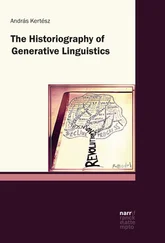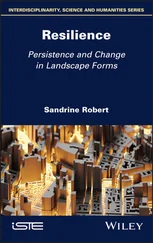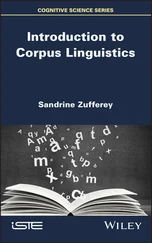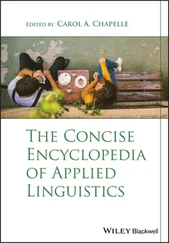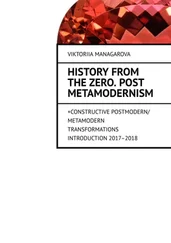Sandrine Zufferey - Introduction to Experimental Linguistics
Здесь есть возможность читать онлайн «Sandrine Zufferey - Introduction to Experimental Linguistics» — ознакомительный отрывок электронной книги совершенно бесплатно, а после прочтения отрывка купить полную версию. В некоторых случаях можно слушать аудио, скачать через торрент в формате fb2 и присутствует краткое содержание. Жанр: unrecognised, на английском языке. Описание произведения, (предисловие) а так же отзывы посетителей доступны на портале библиотеки ЛибКат.
- Название:Introduction to Experimental Linguistics
- Автор:
- Жанр:
- Год:неизвестен
- ISBN:нет данных
- Рейтинг книги:4 / 5. Голосов: 1
-
Избранное:Добавить в избранное
- Отзывы:
-
Ваша оценка:
- 80
- 1
- 2
- 3
- 4
- 5
Introduction to Experimental Linguistics: краткое содержание, описание и аннотация
Предлагаем к чтению аннотацию, описание, краткое содержание или предисловие (зависит от того, что написал сам автор книги «Introduction to Experimental Linguistics»). Если вы не нашли необходимую информацию о книге — напишите в комментариях, мы постараемся отыскать её.
Introduction to Experimental Linguistics — читать онлайн ознакомительный отрывок
Ниже представлен текст книги, разбитый по страницам. Система сохранения места последней прочитанной страницы, позволяет с удобством читать онлайн бесплатно книгу «Introduction to Experimental Linguistics», без необходимости каждый раз заново искать на чём Вы остановились. Поставьте закладку, и сможете в любой момент перейти на страницу, на которой закончили чтение.
Интервал:
Закладка:
1.2.5. Use of statistics and generalization of results
The last essential characteristic of experimental research concerns the way in which data is analyzed. Experimental research aims to collect quantitative data that can be statistically analyzed. As we will see in Chapter 7, quantitative data can be described using different indicators, such as the mean, for example. Based on these descriptive indicators, it is possible to obtain an overview of the data collected, to summarize and illustrate them, in order to communicate the results with simplicity.
At the second stage, data is used to draw conclusions about the research hypotheses. In experimental linguistics, the aim is to study and understand a linguistic phenomenon for a specific population. Since it is impossible to test an entire population, researchers collect data from a representative sample. Through the use of inferential statistics, it is possible to determine whether the results of a particular sample are applicable to the whole population. This process is called generalization .
1.3. Types of experiment in experimental linguistics
Experimental research can be applied to all areas of linguistics, even if historically some areas have used such a methodology more consistently than others. Research questions vary widely between linguistic fields, meaning that many different methods and measures can be used in experimental linguistics. In this book, we do not aim to offer a detailed presentation of every research field and the methods associated with each, but rather to provide an overview of the principles of experimental methodology and the available techniques for linguists. Here, we will introduce some major classes of experiments that can be carried out in linguistics, and we will then develop these in every dedicated chapter.
In general, the experimental studies carried out in linguistics can be classified depending on the aspect of the language under study. Alternately, we will discuss studies on linguistic production and those relating to language comprehension. We will see that the study of comprehension poses many challenges, since this process is not directly observable. For this reason, research on language comprehension is based on the observation of indirect measures, which can be explicit or implicit. We will also see that it is possible to study comprehension by observing different stages of this process, either while it is in progress or once it has been completed.
1.3.1. Studying linguistic productions
The first type of linguistic experiment aims to investigate language production, all the manifestations of language that are produced by individuals in a certain language. Although these manifestations can be collected from diverse corpora and then studied through corpus analysis (see Zufferey (2020) for a detailed presentation of these methods), in some cases, the data contained in the corpus is not enough for studying a linguistic phenomenon. Some rare phenomena practically do not appear, if at all, in a corpus. What is more, the use of observation of naturally produced data is not suitable for showing the influence of a variable on the emergence of a specific linguistic phenomenon, as we have already seen. To counter this, different experiments can be implemented in order to study the production of linguistic phenomena. In these experiments, the goal is to purposefully elicit the emergence of certain linguistic structures, while controlling the context in which such structures appear. The experimental study of linguistic production will be described in further detail in Chapter 3.
1.3.2. Explicit and implicit measures of comprehension
The second type of experiments used in experimental linguistics include studies conducted on the mechanisms involved in language processing and comprehension. Such processes are numerous and range from the organization of the lexicon, to the comprehension of a text or a discourse. It is therefore the most broadly studied aspect in experimental linguistics. Unlike some aspects of the production component, the language comprehension component is unique, in that it cannot be directly assessed through mere observation. It is outright impossible to directly observe the processes involved in the comprehension of a text, for example. This is why it is necessary to find a way to measure these processes indirectly, based on indicators that can be associated with them.
The first way of collecting these indicators requires the use of explicit tasks in which participants have to reflect upon certain linguistic aspects. For example, this is the case for metalinguistic tasks such as grammaticality or acceptability judgments. This type of task could be used to test the participants’ grammatical knowledge, by showing them syntactically correct or incorrect sentences in compliance with grammatical standards, and asking them to identify errors and justify their choice. While these tasks have the advantage of providing direct access to speakers’ knowledge, they also have the defect of being based on their reflexive skills and their subjective appreciation of their own understanding. These tasks are also particularly complex for certain types of people, especially for children or people with language impairments, for whom it is often very difficult to explain the reasoning behind their decision. Other tasks make it possible to circumvent these problems, by setting up experiments in which the participants have to choose between several illustrations matching a linguistic stimulus. For example, Durrleman et al . (2015) tested the comprehension of relative sentences in people with autism spectrum disorder (ASD), asking them to point to the image corresponding to sentences such as “show me the little boy running after the cat”. Making use of such tasks offers the possibility of studying language comprehension in children and populations suffering from linguistic impairments.
Alternatively, methods for studying comprehension in an implicit manner (without asking the participants directly for a judgment or an explanation of their reasoning) have also been developed. This is the case in action tasks, in which some kinds of behavior adopted on the basis of a linguistic stimulus can be observed. For example, Pouscoulous et al . (2007) tested the understanding of scalar implicatures triggered by words such as quelques (roughly equivalent to some ), by asking French-speaking children to arrange tokens in boxes so as to match statements like “quelques cases ont des jetons (some boxes have tokens)”. It is also possible to understand comprehension skills using recall or recognition tasks, in which questions are asked at the end of a reading exercise or after listening to a text or speech fragment. For example, Zufferey et al . (2015a) tested the comprehension of causal relations in children aged 5–8 years, by asking them to answer why questions after every page, when reading a story with them.
1.3.3. Offline and online measures of comprehension
The various tasks listed above, as well as the tasks proposed in the examples presented so far in this chapter, enable access to comprehension once the word, sentence or text has been processed and understood. These measures are described as offline , in that they affect the final interpretations resulting from the comprehension process. On the other hand, online measures allow us to study the processes that come into play in comprehension itself. Such processes have the characteristic of being extremely fast, transient and occurring out of people’s consciousness, therefore remaining inaccessible to traditional offline measures.
Читать дальшеИнтервал:
Закладка:
Похожие книги на «Introduction to Experimental Linguistics»
Представляем Вашему вниманию похожие книги на «Introduction to Experimental Linguistics» списком для выбора. Мы отобрали схожую по названию и смыслу литературу в надежде предоставить читателям больше вариантов отыскать новые, интересные, ещё непрочитанные произведения.
Обсуждение, отзывы о книге «Introduction to Experimental Linguistics» и просто собственные мнения читателей. Оставьте ваши комментарии, напишите, что Вы думаете о произведении, его смысле или главных героях. Укажите что конкретно понравилось, а что нет, и почему Вы так считаете.



![Andrew Radford - Linguistics An Introduction [Second Edition]](/books/397851/andrew-radford-linguistics-an-introduction-second-thumb.webp)

